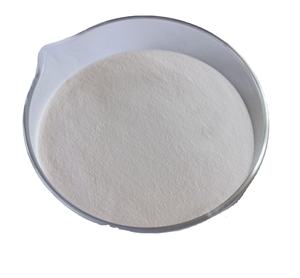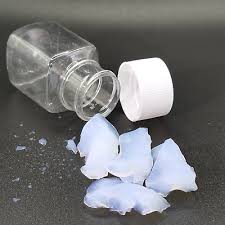Professional industry ceramic supplier, silicon nitride, silicon carbide, aluminum nitride and any other kinds of ceramics.
1. Introduction
In the past 48 hours, a major foundry in Germany reported a 20% increase in furnace downtime due to premature failure of silicon carbide crucibles—highlighting a growing industry concern about improper handling and maintenance practices. If you work with molten metals, glass, or high-temperature lab processes, your silicon carbide crucible is a critical—and expensive—component. Knowing how to use and care for it properly can save time, money, and safety risks.

Silicon carbide crucibles are prized for their exceptional thermal conductivity, resistance to thermal shock, and ability to withstand temperatures above 1,600°C (2,912°F). But even the toughest advanced ceramic can fail if misused. This guide gives you clear, actionable steps to get the most out of your silicon carbide crucible while avoiding common pitfalls.
2. Understanding Your Silicon Carbide Crucible
Before diving into usage, it’s important to recognize what sets silicon carbide apart. Unlike alumina (Al2O3) or zirconia crucibles, silicon carbide offers superior heat transfer and mechanical strength at high temperatures. It’s also more conductive than silicon nitride ceramic, though silicon nitride crucibles (often made by specialized silicon nitride crucible factories) may be preferred in highly corrosive or oxidizing environments.
Note: Don’t confuse silicon carbide with boron carbide. While both are ultra-hard advanced ceramics, boron carbide vs silicon carbide comes down to application—boron carbide excels in armor and abrasion resistance, but silicon carbide is better suited for thermal applications like crucibles, burner nozzles, and furnace linings.
3. Step-by-Step Guide to Using a Silicon Carbide Crucible
3.1. Preheat Gradually
Never place a cold silicon carbide crucible directly into a hot furnace. Thermal shock is the #1 cause of cracking. Instead, ramp up the temperature slowly—ideally at 100–150°C per hour—until you reach 600°C. Hold for 30–60 minutes to ensure even heating before proceeding to your target temperature.

3.2. Avoid Contamination
Use clean tools and ensure your charge material is free of moisture, oils, or reactive impurities. Even small amounts of chlorides or sulfates can degrade the crucible lining over time. If you’re melting aluminum or copper alloys, consider using a protective flux—but verify compatibility with silicon carbide first.
3.3. Handle with Care
Silicon carbide is strong but brittle. Always use tongs designed for crucibles, and never drop or strike it. Store it on a flat, dry surface away from vibration. If you’re using related components like silicon carbide ceramic columns, rings, or bricks, ensure they’re properly aligned to avoid stress points.
4. Common Problems and How to Fix Them
4.1. Cracking or Spalling
This usually results from rapid heating/cooling or mechanical impact. Solution: Always follow a controlled thermal cycle. Never quench a hot crucible in water or air-blast cool it.

4.2. Glazing or Buildup
Repeated use can cause a glassy layer to form inside the crucible, especially with certain alloys. This isn’t always bad—it can protect the surface—but excessive buildup reduces capacity and heat transfer. Gently scrape with a non-metallic tool or use a mild thermal cleaning cycle (e.g., heating to 800°C in air to burn off residues).
4.3. Reduced Lifespan
If your crucible fails after just a few melts, check your process: Are you exceeding its rated temperature? Using incompatible materials? Skipping preheating? Also, verify you’re using genuine silicon carbide—not a lower-grade composite.
5. Maintenance and Storage Tips
After use, allow the crucible to cool naturally inside the furnace (turn off heat and let it sit overnight if possible). Once cool, inspect for cracks, pits, or thinning walls. Clean only with soft brushes—never abrasive pads or harsh chemicals.
Store in a dry, dust-free cabinet. Moisture can lead to oxidation of free silicon in some RBSiC (reaction-bonded silicon carbide) formulations, weakening the structure over time. If you also use silicon carbide ceramic tiles, discs, or piping, store them similarly to preserve integrity.
6. When to Replace Your Crucible
Replace your silicon carbide crucible if you notice:
- Visible cracks or holes
- Wall thickness reduced by more than 20%
- Warping or deformation
- Frequent sticking or inconsistent melting behavior
Don’t try to patch or weld a damaged crucible—it’s a safety hazard.
7. Bonus: Silicon Carbide Beyond Crucibles
While this guide focuses on crucibles, silicon carbide’s versatility extends to many high-performance components: silicon carbide burner nozzles, thermocouple protection tubes, ceramic baking dishes (like silicon carbide ceramic casserole dishes or pie dishes), and even silicon carbide ceramic dinner plates. However, note that kitchenware labeled ‘silicon carbide ceramic’ is often a glaze or composite—not pure SiC like industrial versions.
For extreme environments, compare options like silicon nitride plates, custom silicon nitride heat shields, or zirconia tubes. Each advanced ceramic has its niche—silicon carbide shines where thermal shock resistance and conductivity matter most.
8. Conclusion
A silicon carbide crucible is a powerful tool—but only if treated with respect. By preheating properly, avoiding contamination, handling gently, and inspecting regularly, you’ll extend its life and ensure consistent, safe operation. Whether you’re in metallurgy, glassmaking, or advanced ceramics manufacturing, these simple steps make a big difference. Remember: the goal isn’t just to use your crucible—it’s to use it right.
Our Website founded on October 17, 2012, is a high-tech enterprise committed to the research and development, production, processing, sales and technical services of ceramic relative materials such as How. Our products includes but not limited to Boron Carbide Ceramic Products, Boron Nitride Ceramic Products, Silicon Carbide Ceramic Products, Silicon Nitride Ceramic Products, Zirconium Dioxide Ceramic Products, etc. If you are interested, please feel free to contact us.




